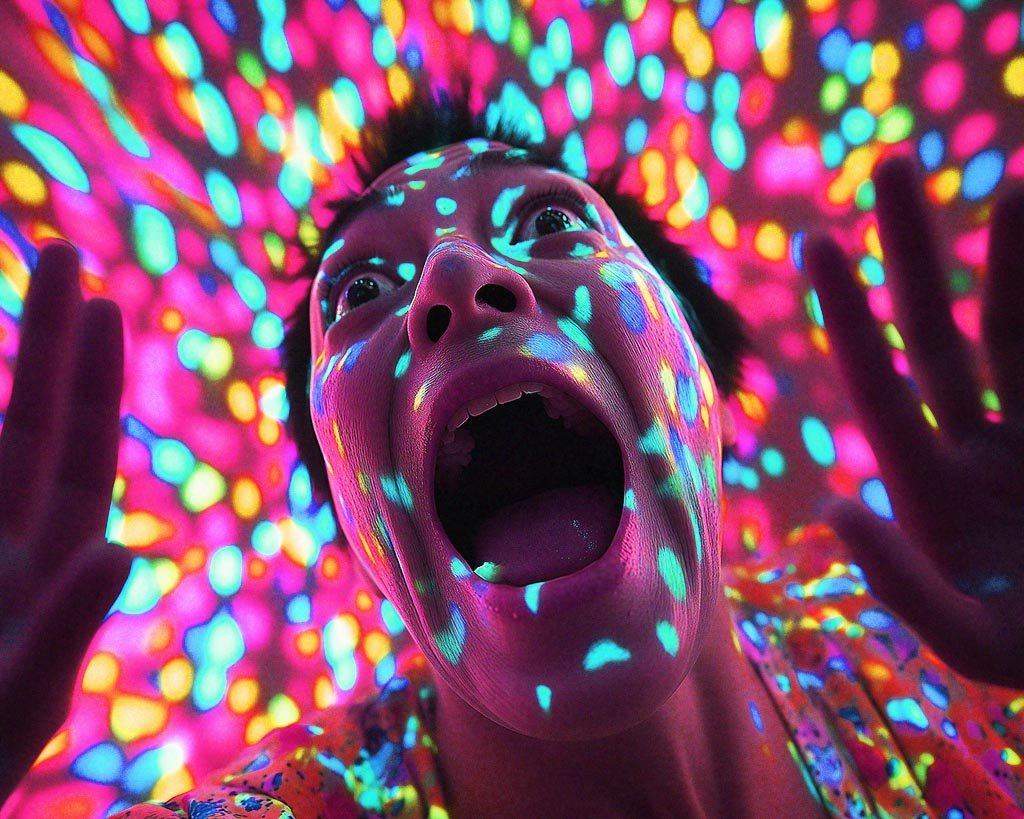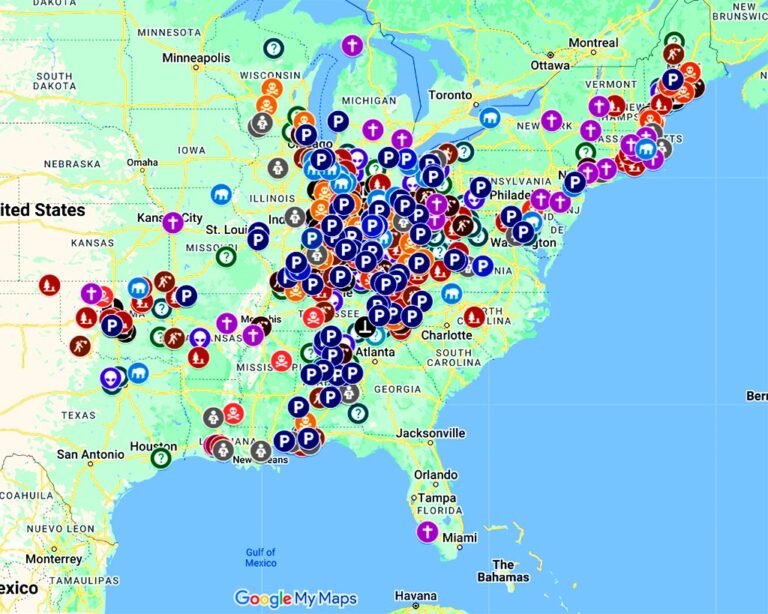What is a Panic Attack?
Panic attacks are sudden episodes of intense fear or discomfort that can arise without warning, leaving individuals feeling overwhelmed and frightened. These episodes can have a profound impact on both mental and physical health, especially if left untreated. Understanding panic attacks is essential for maintaining overall well-being and managing mental health effectively. By recognizing the different forms panic attacks can take, understanding their causes, and knowing how to identify symptoms in oneself and others, individuals can take the necessary steps toward healing and recovery.
This article explores various types of panic attacks, delving into their causes, symptoms, and how to identify them early on. It will also offer strategies for healing, including self-care techniques and advice on when to seek professional support. Untreated panic attacks can lead to serious emotional and physical health problems, including chronic anxiety, depression, and a diminished quality of life. Early identification and intervention are crucial in preventing these negative outcomes.
While many self-care strategies can help manage panic attacks, professional consultation is essential for a comprehensive understanding of the condition and to tailor treatment to individual needs. This information should serve as a supplemental guide or a call to action for those who may be experiencing symptoms of panic attacks.
Common Types of Panic Attacks
Panic attacks can manifest in various forms, each with unique characteristics. Knowing the differences between these types is important for tailoring effective healing strategies. Below are some common types of panic attacks and their defining features:
Unexpected Panic Attacks
- What It Is: Panic attacks that occur suddenly, without any obvious cause or trigger. These are often the most frightening because they seem to come out of nowhere.
- Causes: Although there is no immediate cause, genetic predisposition, stress, or a history of anxiety disorders can contribute.
- Symptoms: Rapid heart rate, shortness of breath, dizziness, trembling, and intense fear or discomfort.
Situational Panic Attacks
- What It Is: These attacks are triggered by specific situations, such as being in a crowded place or encountering a phobia.
- Causes: Known triggers, such as public speaking, driving, or being in enclosed spaces.
- Symptoms: Sweating, nausea, chest pain, hyperventilation, and a sense of impending doom.
Nocturnal Panic Attacks
- What It Is: Panic attacks that occur during sleep, waking the person in a state of intense fear and confusion.
- Causes: Often associated with sleep disorders, heightened anxiety, or unresolved stressors.
- Symptoms: Gasping for air, choking sensation, sweating, and rapid heartbeat upon waking.
Cued Panic Attacks
- What It Is: These are triggered by known environmental or psychological stressors and usually occur when the individual anticipates the trigger.
- Causes: A direct response to specific, identifiable fears such as spiders, heights, or certain social situations.
- Symptoms: Fear of the trigger, shortness of breath, rapid heartbeat, sweating, and a feeling of detachment from reality.
Anticipatory Panic Attacks
- What It Is: Panic attacks that occur in anticipation of a stressful situation, often linked to previous experiences of panic.
- Causes: Fear of an upcoming event, such as an exam, social interaction, or public speaking engagement.
- Symptoms: Nervousness, feeling faint, palpitations, sweating, and a sense of helplessness.
Exercise-Induced Panic Attacks
- What It Is: Panic attacks that occur during or after physical activity, often due to a misinterpretation of physical sensations as dangerous.
- Causes: Physical exertion, especially if combined with heightened anxiety, can trigger symptoms that resemble panic attacks.
- Symptoms: Increased heart rate, dizziness, breathlessness, and fear of losing control or fainting.
Alcohol or Substance-Induced Panic Attacks
- What It Is: Panic attacks triggered by the use or withdrawal from substances such as alcohol, caffeine, or drugs.
- Causes: Chemical imbalances caused by substance use, withdrawal, or excessive consumption of stimulants.
- Symptoms: Tremors, confusion, heart palpitations, shortness of breath, and overwhelming fear.
Understanding these different types of panic attacks can help individuals recognize their own triggers and tailor their healing strategies accordingly.
Identifying Panic Attacks in Yourself and Others
Early identification of panic attacks is crucial for faster recovery and minimizing harm. Recognizing the symptoms in oneself or others can prevent the condition from escalating and help implement necessary interventions.
Physical Signs
- Shortness of breath or hyperventilation.
- Racing heart or palpitations.
- Sweating, shaking, or trembling.
- Dizziness or lightheadedness.
- Tightness in the chest or throat.
Emotional Signs
- Overwhelming fear of losing control or dying.
- Intense feelings of dread or impending doom.
- Irrational fear or paranoia that something catastrophic is happening.
- Emotional detachment or numbness during the attack.
Behavioral Signs
- Avoidance of specific situations or places where attacks have occurred.
- Restlessness or difficulty staying calm in stressful environments.
- Sudden changes in routine to avoid triggers.
- Pacing or nervous habits like fidgeting or nail-biting.
Interpersonal Signs
- Withdrawal from social interactions or avoidance of social settings.
- Increased tension in relationships due to unexplained outbursts or irritability.
- Reluctance to participate in group activities or public events.
Self-Identification
Reflect on how often you feel sudden, intense fear that seems disproportionate to the situation. Ask yourself if you’ve experienced physical symptoms like rapid heart rate, sweating, or shortness of breath, especially without clear cause. Consider whether you avoid situations or places due to fear of experiencing an attack.
Identification in Others
If a loved one frequently seems overwhelmed by fear, experiences physical symptoms like rapid breathing, or avoids specific activities due to anxiety, these could be signs of panic attacks. Approach the subject gently, expressing concern rather than judgment, and encourage them to seek professional support.
Recognizing these signs early can help reduce the long-term impact of panic attacks on an individual’s life.
Psychological Harms and Emotional Consequences of Untreated Panic Attacks
Untreated panic attacks can lead to significant emotional and psychological harm. When left unaddressed, the symptoms can worsen over time, resulting in additional mental health challenges.
Chronic Anxiety
Panic attacks can evolve into generalized anxiety, where an individual constantly worries about having another attack, creating a cycle of fear and anxiety.
Depression
The emotional toll of recurrent panic attacks can lead to feelings of hopelessness and despair, eventually triggering clinical depression.
Cognitive Impairment
Prolonged exposure to panic attacks can affect memory, concentration, and decision-making skills, making everyday tasks more difficult.
Social Isolation
Individuals may withdraw from social situations due to fear of experiencing an attack in public, which can lead to loneliness and a diminished support network.
Substance Abuse
Some individuals may turn to drugs or alcohol to cope with panic attacks, which can lead to addiction and exacerbate mental health issues.
Physical Health Decline
Untreated panic attacks can contribute to high blood pressure, heart disease, and chronic stress, affecting overall physical health.
Increased Risk of Suicide
In extreme cases, the emotional burden of untreated panic attacks can increase the risk of suicidal thoughts or actions.
Emotional Exhaustion
Constantly battling intense fear and anxiety can lead to emotional fatigue, making it harder to cope with everyday life.
Addressing panic attacks early can prevent these harms and improve overall mental and physical health.
The Road to Recovery
Healing from panic attacks is possible through a combination of self-care, structured interventions, and professional help. It’s essential to implement strategies that work for the individual, gradually reducing the frequency and intensity of panic attacks.
Recognize the Signs and Reach Out
- Why It Helps: Early recognition and seeking support can prevent panic attacks from escalating.
- How to Do It: Keep track of your symptoms, and when they become overwhelming, reach out to a trusted friend, family member, or mental health professional.
Practice Deep Breathing Techniques
- Why It Helps: Controlled breathing can calm the body’s fight-or-flight response, reducing the physical symptoms of panic attacks.
- How to Do It: Practice deep breathing exercises daily, especially during stressful moments. Focus on slow, deep inhalations and exhalations to regulate your heart rate.
Engage in Regular Physical Activity
- Why It Helps: Exercise helps reduce anxiety and boosts mood-enhancing chemicals in the brain.
- How to Do It: Start with small, manageable activities such as walking or yoga, and gradually increase intensity as your comfort level improves.
Establish a Calming Routine
- Why It Helps: Routines create a sense of stability and predictability, which can reduce anxiety.
- How to Do It: Incorporate calming activities into your daily routine, such as meditation, reading, or taking a warm bath before bed.
Limit Caffeine and Stimulants
- Why It Helps: Caffeine and stimulants can increase anxiety and trigger panic attacks in some individuals.
- How to Do It: Gradually reduce your intake of coffee, energy drinks, and other stimulants that may contribute to heightened anxiety.
Cognitive Behavioral Therapy (CBT)
- Why It Helps: CBT is an evidence-based therapy that helps change thought patterns contributing to panic attacks.
- How to Do It: Work with a therapist to identify negative thought patterns and develop healthier ways of responding to anxiety-provoking situations.
Mindfulness and Meditation
- Why It Helps: Mindfulness techniques help ground individuals in the present moment, reducing the spiraling thoughts associated with panic attacks.
- How to Do It: Practice daily meditation or mindfulness exercises, focusing on breathing, body sensations, or calming visualizations.
Progressive Muscle Relaxation
- Why It Helps: This technique helps reduce muscle tension, a common symptom of panic attacks.
- How to Do It: Gradually tense and then release each muscle group in your body, starting from your toes and working up to your head.
Seek Professional Support
- Why It Helps: A mental health professional can provide guidance, offer therapeutic techniques, and prescribe medication if necessary.
- How to Do It: Schedule regular appointments with a therapist or psychiatrist to discuss your symptoms and track your progress.
Healing from panic attacks takes time and effort, but with the right strategies and support, it is entirely achievable.
What Next?
Panic attacks can be overwhelming and debilitating, but understanding their various types, identifying symptoms early, and implementing healing strategies can lead to recovery. While untreated panic attacks can result in significant emotional and physical harm, such as chronic anxiety, social isolation, and cognitive impairment, recovery is always possible with the right combination of self-care and professional help. Early intervention plays a crucial role in reducing the frequency and intensity of panic attacks, allowing individuals to regain control of their lives.
With patience, support, and professional guidance, those experiencing panic attacks can move toward a future of improved well-being and emotional resilience.





















+ There are no comments
Add yours